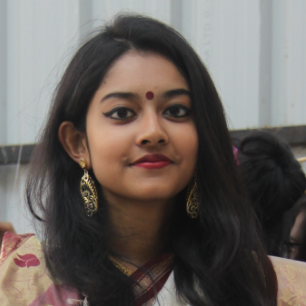On the occasion of the International Day of Women and Girls in Science, the United Nations revealed a startling statistic. Globally, the number of women researchers stands only at 33%, despite women in science comprising nearly 50% of Masters and PhD students. In India the number of women working in research and development stood at 15% in 2020. I am one of them.
As an Indian woman scientist, I have worked on research projects in wildlife conservation, biodiversity offset analysis and environmental policy development. For as long as I can remember, I have loved science and taking it up as a profession seemed like the obvious choice. My choices also received immense support from my family. However, what I did not anticipate was a fraternity that still holds biases against women in the field. You could call them cultural blocks, systemic discrimination, or misogyny – views that are holding science back.
A silent bias deeming women ‘unreliable’ in case they decide to start a family has cost me a funded position. I have been considered a liability for on-field projects due to the need to ensure my safety. Additionally, I have also received unsolicited advice from interviewers regarding my career path and my personal life. Not only did my dismissal of this guidance cost me a job, it also labeled me ‘aggressive’ – code for ‘assertive’, a distasteful trait in women. And this has been the story of countless others. If you do manage to cross hurdles and enter the workforce, you are paid significantly less than your male counterparts in a field that is notorious for being inadequately compensated.
Women professionals already have multiple hoops they need to jump through – social, cultural, financial – to get to a career of their choice. Despite the silver lining that the number of girls enrolling in higher education is steadily increasing, only a fraction of them are found to make it into a career in science. I can attest to the fact that after graduating, it is disproportionately challenging for a woman to land a steady position in scientific research as compared to her male counterparts.
When the pandemic hit in 2020, academic journal Elsevier reported a huge rise in research paper submissions. While submissions from male authors crossed 1,50,000 between January 2020-May 2020, submissions from female authors barely crossed 60,000. Linking this to a Time Use Survey by the National Statistical Organization hypothesizes that Indian women may have missed out on professional productivity due to the extra load of unpaid domestic work they were engaged in. Scientific research demands long working hours, irregular schedules and creativity. Juggling domestic responsibilities makes it exponentially harder to commit to research. Hence, the hypothesis holds especially true for women scientists.
While we struggle to address basic flaws in our perception of women professionals, the world is moving at a rapid pace. Our problems are increasing – be it climate change, public health or social inequity. They are linking up – with the climate crisis affecting the vulnerable, costing the economy and further deepening social divide. And, there is much we struggle to predict – such as a global pandemic or a devastating volcanic eruption. In such an age, scientific research no longer revolves around top-notch equipment, it needs diverse, innovative perspectives.
‘Gendered’ research has proven to yield more accurate results. For example, male-focused innovations in healthcare have led to negative effects and even deaths among women. Female-driven research introduces approaches and solutions better suited for a large segment of the population. In India, a trailblazing team of women in space research have contributed to the launch of 120+ satellites, including the historic ‘Mission Mangal’. “Women constitute only 20% of ISRO’s 16,000-strong workforce, but female engineers are increasingly joining in”, says Nandini Harinath, Deputy Operations Director of the Mars Orbiter Mission in a report published in Rocket Women. Better education, awareness and support is leading more women to take on a career in science. The need is now more than ever to create conducive work systems for a diverse community of researchers. Through quality mentorship, accessible resources, gender equity and female representation in senior management and electoral politics, we can support the increased participation of women in every scientific sphere. Without this diversity our efforts to address climate change and other pressing issues will be half-hearted at best, literally!
Science fascinates me because scientific questions are not about finding answers. They are aimed at raising more questions. This International Day of Women and Girls in Science, I hope we encourage young girls around the world to be inquisitive, question the ‘scientist’ stereotype, break barriers and chase their dreams. And I hope we are ready to welcome these promising women in science with open arms.

Tamanna Sengupta
Climate Scientist & Communications Consultant, Greenpeace India

Discussion
Well done Tamanna. I do agree with your views. Now it's time to wake up and to explore for all the young women all over the world. My good wishes are with you and the other young scientists.